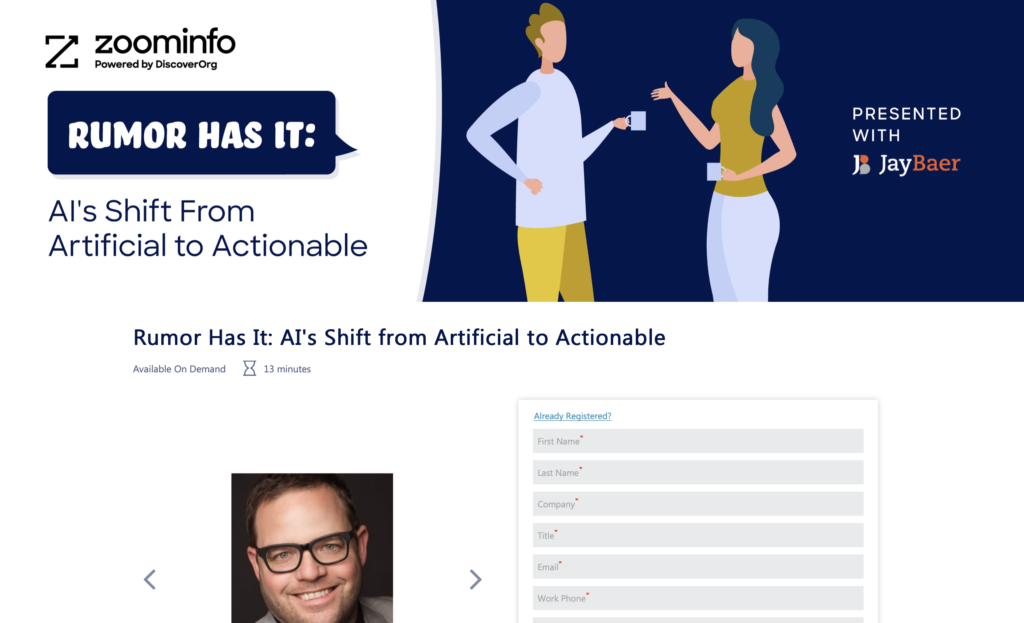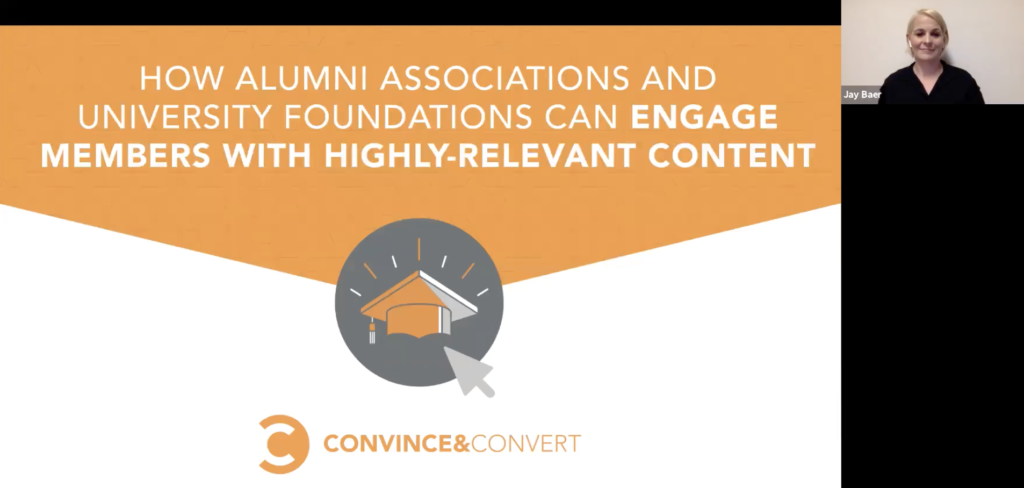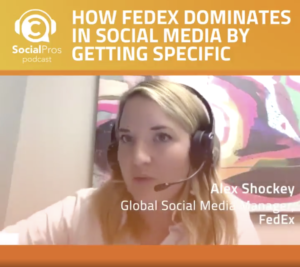https://feeds.feedblitz.com/~/620222088/0/convinceandconvertconsulting/

With more and more companies shifting resources to virtual events, we compiled this quick and handy guide on how to create a successful virtual event for your company.
Not only have I presented at more than 100 virtual events in the past twelve years, my team and I at Convince & Convert organize and produce more than a 30 online events and webinars every year. We know what works, what doesn’t, and we’re here to share that advice with you.
For tips on how to select a webinar/virtual event management solution, check out our recent post, How to Create a Webinar from Scratch.
Let’s dive in now:
1. Keep Session Lengths Short
A 60-minute keynote or breakout session at a face-to-face event is pretty standard and doesn’t usually feel like a slog.
But that’s partially because attendees have other stimuli and the ability to experience presentations in a three-dimensional environment.
It is FAR more difficult to hold audience attention in a virtual event, compared to an in-person conference.
In fact, we pioneered the concept of a “webinine” – a webinar that lasts just nine minutes. Audience show up rate is much higher for sessions of that length (versus 60 minutes), as is replay rate.

Here’s an example of a webinine I presented with my friends at ZoomInfo. A webinine is short webinar that has a higher attendance rate than a full-length, 60-minute webinar.
We’re not suggesting that every session in your virtual event be just nine minutes long, but do consider shortening the time slots you would use for a physical event by 15 or 30 minutes.
For example, a 60-minute breakout face-to-face should be 45 or 30 minutes when delivered online.
2. Sharpen Your Titles and Descriptions
When presented with multiple, simultaneous options for sessions to choose from in a physical event setting, attendees will often rely on word-of-mouth, asking other participants which breakout they are attending, and why.
Most virtual conferences lack this dynamic.
Further, many online events rely on emails, social media posts, and other tactics to inform attendees of what information will be presented (there is no written conference guide, or dedicated mobile app in most cases).
Thus, participants in your virtual event have less information when deciding what sessions to tune in for, and which to skip.
Consequently, it is even more important that the session titles and descriptions for your virtual conference programming are descriptive and compelling.
3. Use a Moderator or Emcee

Even if you have a presenter, you still need an MC to keep the flow going and energy high.
In a face-to-face event, the moderator or emcee helps contextualize the information presented throughout the conference, while also helping to keep energy up and deliver important housekeeping notes.
Many organizations moving to virtual events believe that since the programming is now delivered over the Internet, that this emcee role is no longer necessary.
The opposite is true.
Having a consistent face and voice that “stitches together” the virtual sessions for participants adds much-needed familiarity and helps alleviate the isolated feeling that online events can sometimes produce for attendees.
The best way to implement is to have the event moderator open up the conference online – just like a regular event – and then moderate questions for speakers and pop back online between sessions to chat with attendees (I have played this role many, many times for major online events).
4. Use Attendee Chat Early and Often
The networking component of face-to-face events are almost always cited as the best part of the conference.
While it is of course more difficult to deliver rich networking online, you can assist attendees in interacting amongst themselves and with presenters by making liberal use of the chat/Q&A function in your chosen virtual events platform.
The emcee/moderator should ask attendees questions at the beginning of the day to get participants used to the functionality, and also between sessions to facilitate networking.
Every presenter at your virtual event should be taking questions from the audience using the Chat/Q&A tool.
Further, one of the built-in advantages of online conferences is the ability to use the polling function of the software to ask questions of the audience and get instant, mathematical results.
You should train your presenters how to use this polling feature to make sessions more interesting and interactive.
5. Require Presenter Run-Throughs
Speaking of training presenters, you really should make it mandatory that each of them participate in a run-through of their material a week or so before your virtual event.
Of course, it is likely that your presenters have attended some sort of online event, and may have even delivered a program at some point.
But, EVERY online event software platform is different, and presenters need to understand those nuances.
For example, some online conference software packages “hide” presenter notes when in presentation mode. A speaker accustomed to using presenter notes will be mightily surprised when they all of a sudden disappear once the session begins. (TIP: for online events, have all presenters print out their slides and notes)
Further, once presenters are clear on the different interactive elements of the software, and the inherently altered “feel” of a virtual presentation from the audience perspective, they should make changes to their content accordingly.
Let’s put this plainly: for maximum success you cannot just take your offline presentation slides and deliver them online.
6. Use Cameras
To make the virtual conference feel more similar to the face-to-face experience, you should require presenters to use their Web cam while presenting.
This allows audience to see the speaker during the presentation, which adds another layer of information such as non-verbal cues, etc.
However, this requires each presenter to not only have a decent camera (ideally, better than their on-board laptop cam) as well as suitable lighting.
This isn’t necessarily a huge challenge, but is another wrinkle that presenters don’t have to contend with in a face-to-face event (and is another reason you need run-throughs).

Our very own Anna Hrach presents a webinar for higher ed marketers with video of her speaking.
7. Ensure Quality Sound

Alex Shockey, the Global Social Media Manager at FedEx, wears a headset on a recent episode of Social Pros.
If the speakers at your online conference don’t have fantastic lighting or great cameras, the event can still work if the content is outstanding.
But if the presenter audio isn’t solid, your audience will log off IMMEDIATELY.
Just like with podcasts, sound quality for a virtual event is non-negotiable.
It is shocking how often presenters at online events just figure they can talk into their laptop, with no regard for room acoustics, background noise, dogs barking, people walking by, the neighbor’s cockatoo, and more.
When you do presenter run-throughs make certain they are conducted in the same room and with the same setup as will occur during the actual broadcast.
 Also, consider purchasing USB headset microphones for all presenters and sending them out two weeks before the event, with a link to a video illustrating how to use them. We are also fans of the Yeti speaker too.
Also, consider purchasing USB headset microphones for all presenters and sending them out two weeks before the event, with a link to a video illustrating how to use them. We are also fans of the Yeti speaker too.
Lastly, if the speaker cannot be in a circumstance that is acceptable for audio when their live presentation is scheduled, pre-record that session and then have the speaker log-in at the end of the recorded portion to answer questions. This robs the speaker of the opportunity to use audience polls or take questions via chat during the session, but is better than bad audio.
Summary
In some ways virtual events are easier than in-person events because you don’t have to worry about massive audio-visual infrastructure, meals, hotel rooms, food allergies and other obstacles.
But in other ways online conferences are more difficult because there isn’t one “set up” for the room with speakers just getting a microphone and delivering their info, back-to-back.
The time needed to work with each speaker in a virtual event to ensure excellence and consistency is significant.
But, that time will pay off, and a good emcee/moderator will help you turn your event into a huge success.
The post How to Create a Successful Virtual Event for Your Company appeared first on Content Marketing Consulting and Social Media Strategy.








 Also, consider purchasing USB headset microphones for all presenters and sending them out two weeks before the event, with a link to a video illustrating how to use them. We are also fans of the
Also, consider purchasing USB headset microphones for all presenters and sending them out two weeks before the event, with a link to a video illustrating how to use them. We are also fans of the 